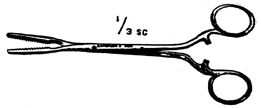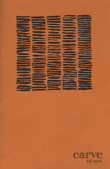Search for my poem Searching for Volcanoes, recently published in Future Welcome: The Moosehead Anthology X, edited by Todd Swift (Montréal: DC Books, 2005).
Future Welcome comes 50 years after 1955. In his introduction to the anthology editor Todd Swift notes: “1955 saw: the opening of Disneyland; the publication of Lolita; ultra-high frequency waves produced at M.I.T.; Hammer’s The Quatermass Xperiment; the introduction of the first fluoride toothpaste, Crest; the International Air Pollution Congress (held in New York City); the debut of Scrabble; B-52s put into service; Ray Kroc’s acquisition of McDonald’s; Elvis’s TV debut; Salk’s polio vaccine; a time bomb on United DC-6 flight; Glenn Gould’s “Goldberg Variations”; Eisenhower’s upholding of the right to use nuclear weapons in defence; US Congress ordering all American coins to read “In God We Trust”; the deaths of James Dean, Wallace Stevens and Albert Einstein; and the birth of Bill Gates.”
Where are we now? Certainly not where we thought we’d be. Swift writes: “I wanted poems and prose both of our moment, and yet imbued with the same sense of retro-kitsch that popularly defines the 50s–works about the future, robots, space travel, technology, and sci-fi terror.”
Searching for Volcanoes tells the not-quite-sci-fi-terror tale of trying to do Internet research on a dial-up connection. It’s hard to believe that the Internet didn’t exist in 1955 and yet, in 2005, a 56k connection is utterly antiquated. Volcanoes are a good analogy. As my brilliant friend Norman T. White pointed out to me: “Funny thing about erupting lava – it’s brand new, but it’s also ancient.”
Here’s an excerpt from searching for Volcanoes:
56k
takes forever to fill
collapsed craters
with blue-screen-blue
caldera lakes.
Line by line
the sky downloads:
progressive jpeg descends
a strafe of cloud dithers,
geological time passes –
falls toward mountain…

Future Welcome includes new writing from David Wevill, Sina Queyras, Raymond Hsu, Robert Minhinnick, Annie Freud, bill bissett, Patrick Chapman, Meredith Quartermain, Jason Camlot, Liane Strauss, Todd Colby, Jennifer K. Dick, John Hartley Williams, Louise Bak, Hal Sirowitz, Adeena Karasick, Mike Marqusee, Kavita Joshi, Stan Rogal, Tammy Armstrong, Richard Peabody, Jenna Butler, Ali Riley, Jon Paul Fiorentino, David Prater, J. R. Carpenter, David McGimpsey–plus many more.
For more information on or to order Future Welcome vist DC Books
For more information on editior Todd Swift visit his web sites: http://www.toddswift.com/ and http://toddswift.blogspot.com/
. . . . .
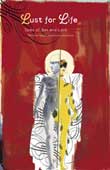

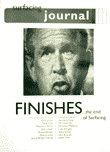 My essay, Con-Textilizing Critical Language, appears in the winter 2006 issue of
My essay, Con-Textilizing Critical Language, appears in the winter 2006 issue of 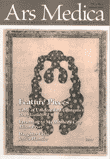 I began writing Notions of the Archival in Memory and Deportment as a response to the discourse of disembodiment that was prevalent in early days of the Internet. I never believed that the physical gendered body would be subsumed in an idealized information age. Even in our attempts to externalize and expand upon the processes of the brain through the computational and storage capacities of the computer, the precariousness of the biological body persists. It seems to me that somewhere along the way cultural theory veered away from body politics. In Notions of the Archival in Memory and Deportment I have tried to examine, from the inside, not just ‘the’ body, but also ‘my’ body in particular. I have focused on the storage and retention of bodily memory in order to explore the relationship and/or disconnect between body and mind that has preoccupied philosophers for generations. In Ethics, Part II: Of the Nature and Origin of the Mind, Spinoza writes: “The human mind is capable of perceiving a great number of things, and … is cable of receiving a great number of impressions… If the human body is affected in a manner which involves the nature of any external body, the human mind will regard the said external body as actually existing… Memory is simply a certain association of ideas involving the nature of things outside the human body, which association arises in the mind according to the order and association of the modifications of the human body… The human mind has no knowledge of the body, and does not know it to exist, save through the ideas of the modifications whereby the body is affected.”
I began writing Notions of the Archival in Memory and Deportment as a response to the discourse of disembodiment that was prevalent in early days of the Internet. I never believed that the physical gendered body would be subsumed in an idealized information age. Even in our attempts to externalize and expand upon the processes of the brain through the computational and storage capacities of the computer, the precariousness of the biological body persists. It seems to me that somewhere along the way cultural theory veered away from body politics. In Notions of the Archival in Memory and Deportment I have tried to examine, from the inside, not just ‘the’ body, but also ‘my’ body in particular. I have focused on the storage and retention of bodily memory in order to explore the relationship and/or disconnect between body and mind that has preoccupied philosophers for generations. In Ethics, Part II: Of the Nature and Origin of the Mind, Spinoza writes: “The human mind is capable of perceiving a great number of things, and … is cable of receiving a great number of impressions… If the human body is affected in a manner which involves the nature of any external body, the human mind will regard the said external body as actually existing… Memory is simply a certain association of ideas involving the nature of things outside the human body, which association arises in the mind according to the order and association of the modifications of the human body… The human mind has no knowledge of the body, and does not know it to exist, save through the ideas of the modifications whereby the body is affected.”